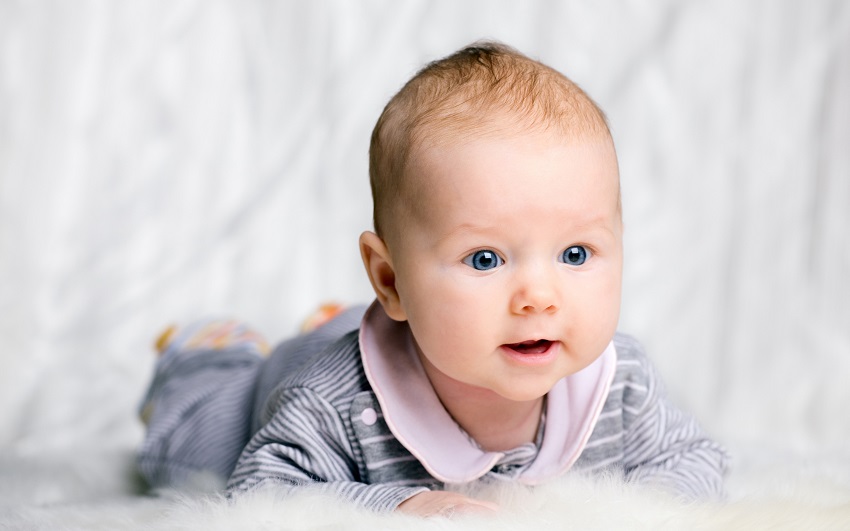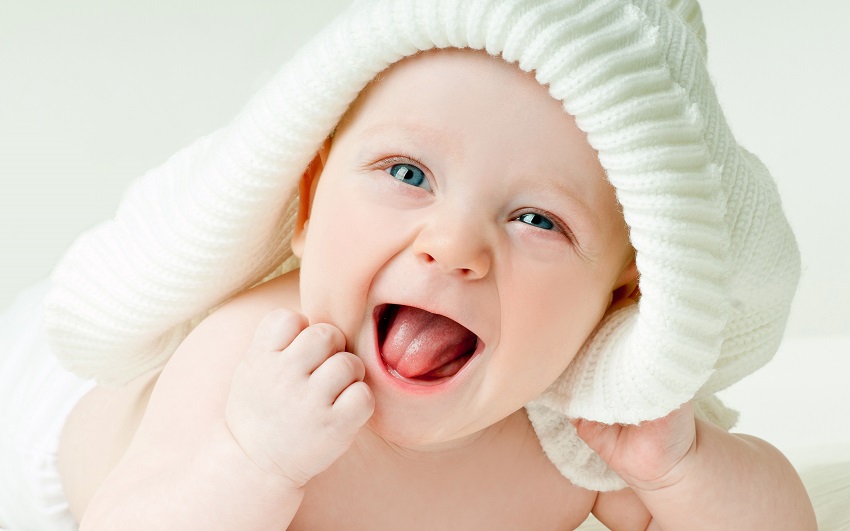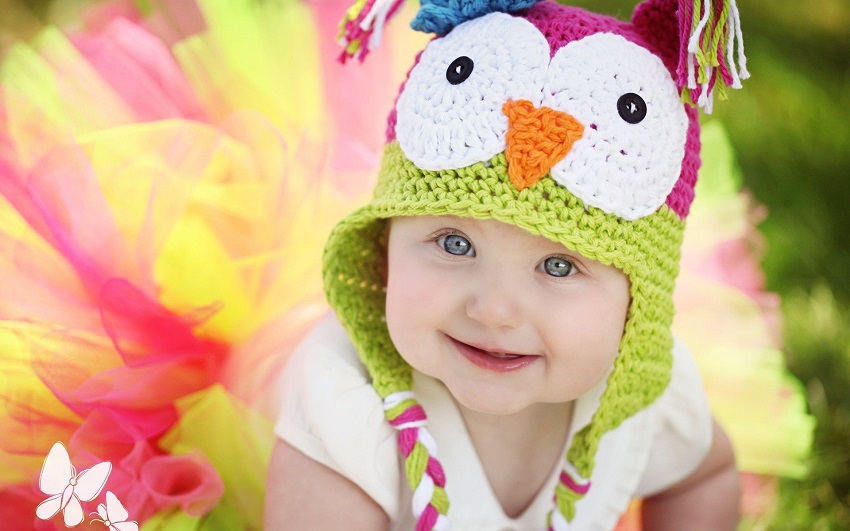The baby has emotions. Like everything in your life, first, they are very basic and then they are evolving. The emotional development of the baby is a process that is linked to their physical and mental growth.
Throughout the first 3 years of life, each of these aspects (physical, mental and emotional) will predominate or be more noticeable, but all three go together and are fundamental for the baby to reach the development that guarantees its well-being and balance.
Stages in the emotional development of the baby
To understand how the emotional development of the baby occurs, the classification that we present is for mere didactic purposes. As we always say, each baby is unique and within the framework of its individuality, it will have its own rhythm and particular development.
1. From 1 to 3 months
The newborn basically expresses two reactions: pleasure and displeasure. He feels at ease and content in his mother’s arms when he is breastfed. He cries to express hunger, thirst, if the diaper’s humidity bothers him or if there is a pain that afflicts him.

Your needs are “urgent.” Their reactions are exaggerated. Crying is a discharge to ensure their survival, which will gradually become a way of communicating their needs. As it grows, it will incorporate gestures, sounds and, later, words.
The baby is interested in the faces of those around him and learns to distinguish expressions of joy, sadness, and anger. Sketch the first smiles. The baby smiles when he is happy or grimaces to attract attention.
Learn to recognize your parents and the people with whom you are familiar. He is dependent on his mother and, insofar as his needs are attended to in a timely manner, his personality and stability are structured.
You may also interest: How to strengthen your brain| 9 tips to strengthen your brain
2. From 4 to 6 months
After 4 or 5 months rabies and disgust appear. The baby cries to show his displeasure. It responds more and more to the faces and voices that surround it. He likes the company and the attention of his parents and caregivers, and with each one he establishes a privileged relationship.
With voices, gestures, shouts, smiles, and laughter, he tries to communicate, it is no longer just to satisfy a need for survival. Recognizes and responds to the mood of his mother.
At 5 months, he begins to show feelings of fear when he hears loud or unexpected noises. At 6 months, the baby begins to miss more and more with people he does not know and can express his displeasure physically.
3. From 7 to 9 months
At 7 months, the baby reacts decisively with tension and fear before the unknown. As you can remember, you will be happy to see familiar faces. Also, you will feel fear in the presence of strange adults.
Between 7 and 8 months she is interested in other babies and children. He likes to communicate with laughter and gestures. Use all the skills acquired so far to establish that communication and relate. Shows interest in toys looks at them everywhere, hits them.

He perceives the temporary separation of his mother or who else cares for them and that affects him greatly.
The fear and anxiety you feel about the separation will give in depending on the bond you have created with the person who takes care of you while Mom is not, that is, the greater the bond, the less anxiety, and vice versa.
The baby thanks for a reaction. It needs to be recognized as an interlocutor. In this stage of the emotional development of the baby, the need for communication is as relevant as the satisfaction of their physical needs for food and care.
4. From 10 to 12 months
The baby easily expresses happiness, disgust or anger. He realizes if people are happy or angry with him and reacts differently. He has fun imitating others. It mimics expressions of surprise, shouts, gestures.
Understands and follows social rules and routines. Express your affection with hugs and pats, especially with your parents and relatives or closest caregivers. He recognizes his name.
The baby is very attentive to the movements of mom or dad at home, and if they leave the room where he is, he cries. If a stranger takes him in his arms, he feels anxiety.
At this stage of the baby’s emotional development, he begins to raise his arms to ask mom or dad to raise him. It is also common for him to start helping while being dressed by raising his arms.
5. From 13 to 18 months
When he explores something unknown, he seeks the approval of the parents, if he receives a look of fear he will be inhibited; if he receives a smile he will dare to approach. The emotional behavior of the adults he loves most (mom and dad) regulates the baby’s ability to explore and relate.

The baby captures the information it receives from the world around it. You know if they attend to your needs at the first crying, or if you should cry for hours to pay attention.
The baby is very sensitive to the emotional state of his parents or caregiver. If parents or caregivers are happy, the baby will play more. If they are sad, the baby will be more elusive. He goes from wanting to be stuck to his parents to play alone independently.
At this stage of the baby’s emotional development, he is aware of the way he shows affection. Learn to express your affection based on imitation. Enjoy giving kisses and hugs, as well as receive praise and act accordingly to receive them. Jealousy also appears. It is egocentric.
6. From 19 to 24 months
It is a difficult emotional period because he wants to be independent and autonomous, but he is still dependent in many ways. That generates frustration, which triggers the impending tantrums or tantrums.
He communicates through his body: if he bites or assaults he is expressing his anguish, his difficulty expressing his feelings adequately or his need for clear limits.
The road to independence is its main focus. Now he understands that his wishes are different from those of his parents, which generates an important unforeseen event: he does not always get what he wants.
The baby starts a marked egocentrism in this era. If you want something, it is for “already”, and those around you are there to satisfy your demands. He begins to savor his autonomy: he likes to be pampered, but when that is enough, he lets it be known. His favorite word is “NO”.
7. From 2 to 3 years
The child feels anxiety every time his feelings get out of control. He unloads his rage with which he presents “scare” the adults, and he himself ends up more frightened by the force of his reactions.
Their greatest conflict is the clash between boundaries and their independence. He is not aware of the rules, he obeys them because he respects the adults who impose them.

Understand that your actions trigger reactions in other people. Identify those actions and learn to annoy or please others. The symbolic game appears and through this download part of its aggressiveness or tension.
As he also understands the sense of belonging, envy appears. Fear increases It is the time to start calling emotions by their name so that they learn to identify them and eventually regulate them.
Final ideas
The baby has from its birth the ability to relate to other human beings. For this, he needs another human being that reacts to his needs, demands, and feelings. Without a doubt, the best interlocutors will always be their parents.
The model you will follow to learn to identify and regulate your emotions comes from the example of mom and dad.
We also recommend you to check this article: http://www.babysleeppositioners.com/7-care-premature-baby-needs/
Tags: emotional development, emotional development of the baby


Leave a Reply